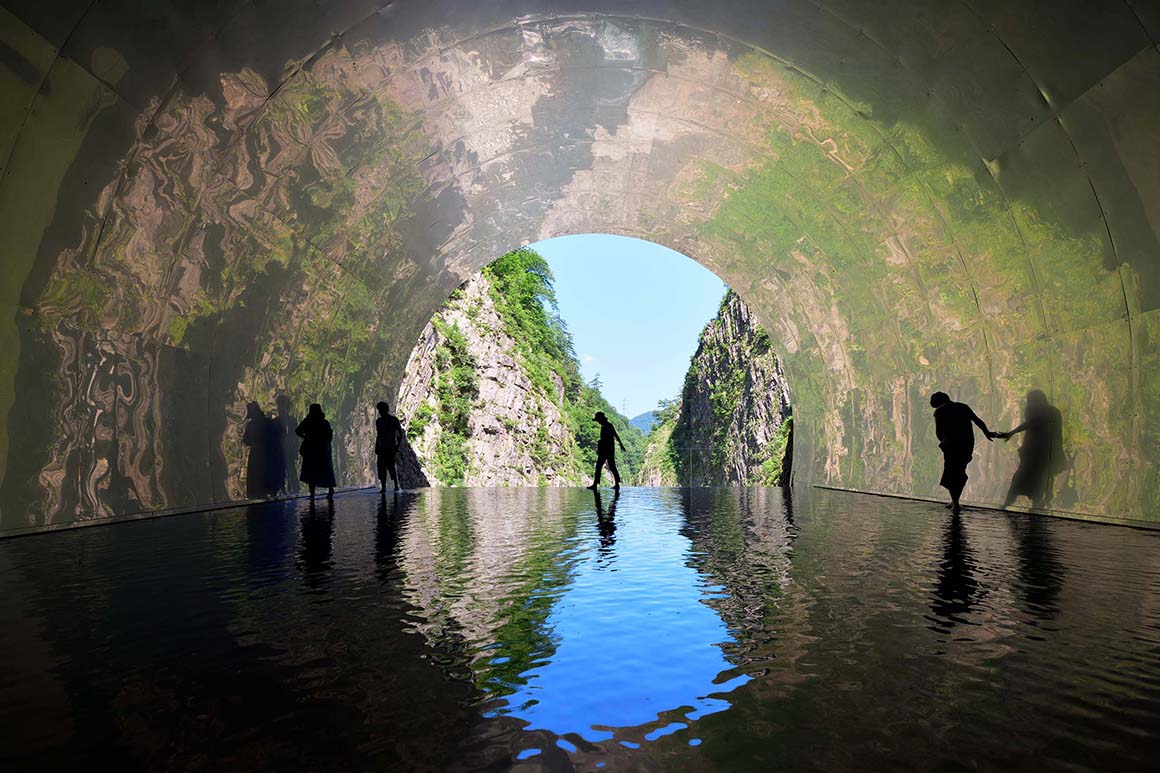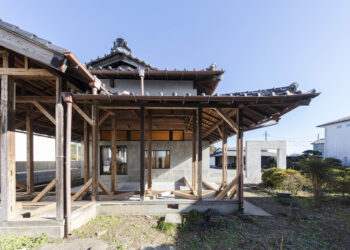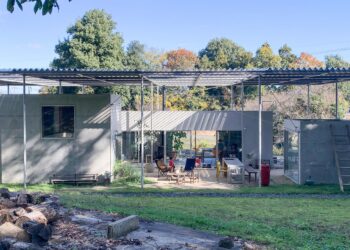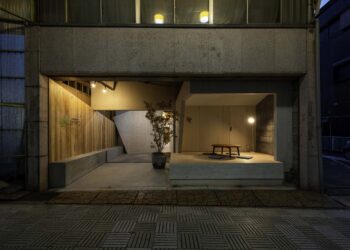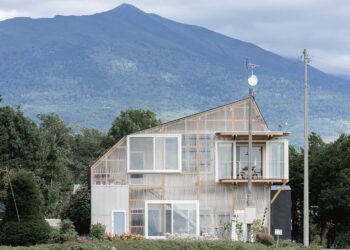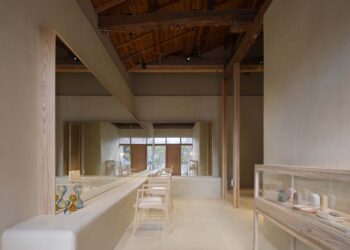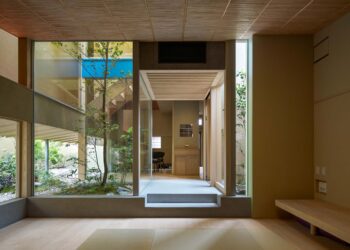Revitalized through art
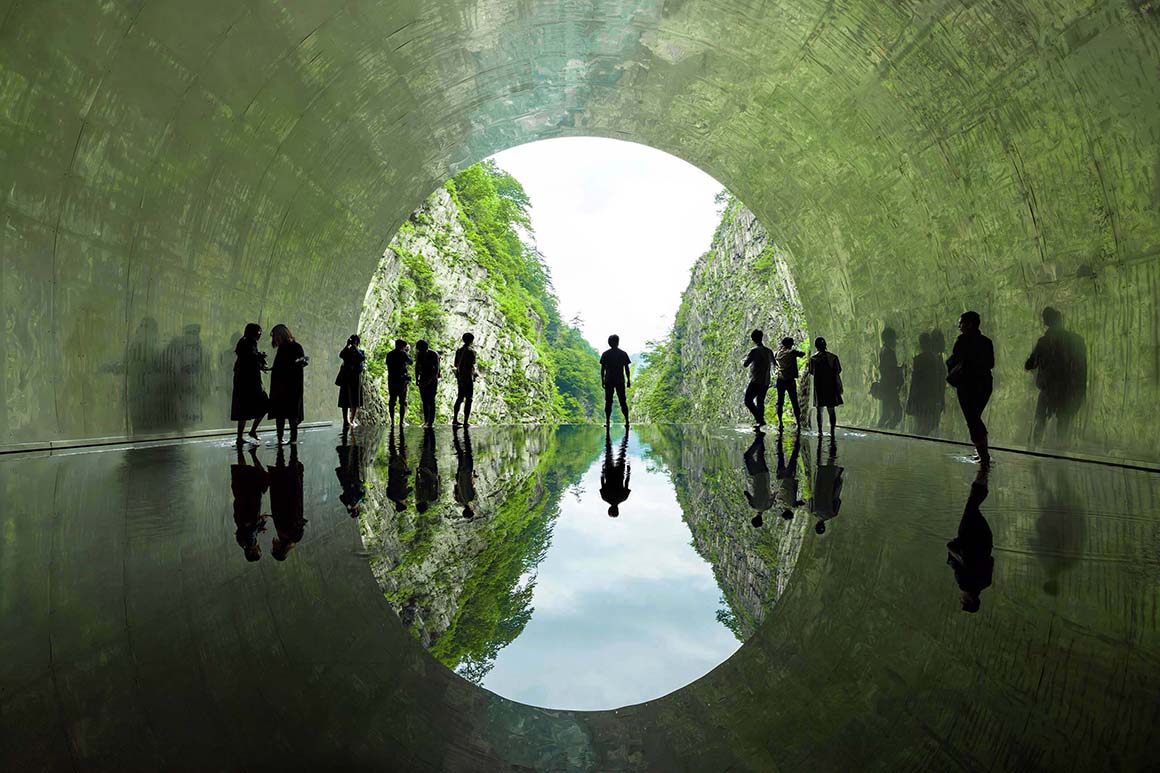
MAD Architects, led by Ma Yansong, has completed the restoration of the Kiyotsu Gorge Tunnel in Japan’s Niigata prefecture. The revitalization project, which opened at the 2018 Echigo-Tsumari Triennale, sees the installation of several permanent artistic spaces along the historic lookout tunnel, with the intention of bringing back the cultural energy of the region.
Echigo-Tsumari is home to snowy mountainous terrain and a satoyama (an agricultural expanse), where traditional farming is still practiced. While rich in nature, the region’s population is slowly aging and decreasing.
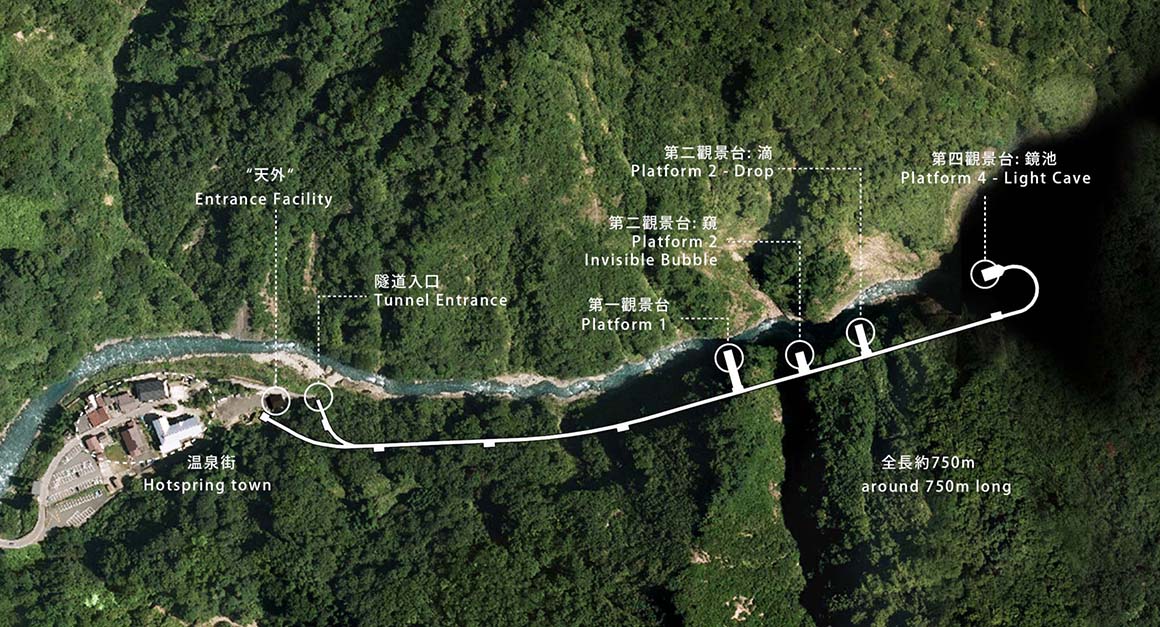
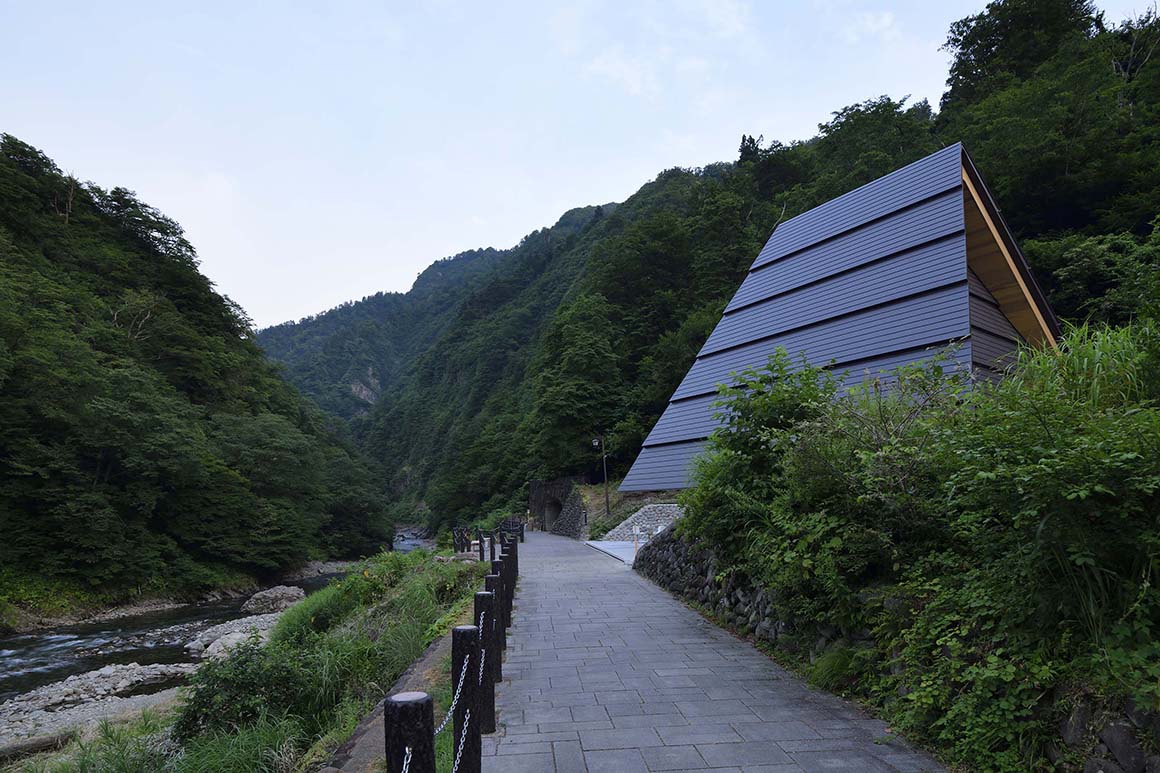
In 2000, Fram Kitagawa founded the Echigo-Tsumari Triennale to restore cultural energy to the region: it hosts around 160 artworks across 200 villages. Art installations are realized in collaboration between internationally renowned artists and locals, and are dispersed throughout the area’s fields, forests, empty houses, schools, and other abandoned spaces.
As part of the 2018 program, MAD Architects was invited to revitalize the Kiyotsu Gorge Tunnel – a historic, 750m passageway that cuts through distinctive rock formations, offering panoramic views over one of Japan’s three great chasms.
Drawing on the “five elements” of nature (wood, earth, metal, fire, water), MAD’s scheme transforms points along the historic tunnel through the realization of several architectural spaces. The designs rethink the relationship between humans and nature, seeking to reconnect locals and visitors with the majestic beauty of the land.
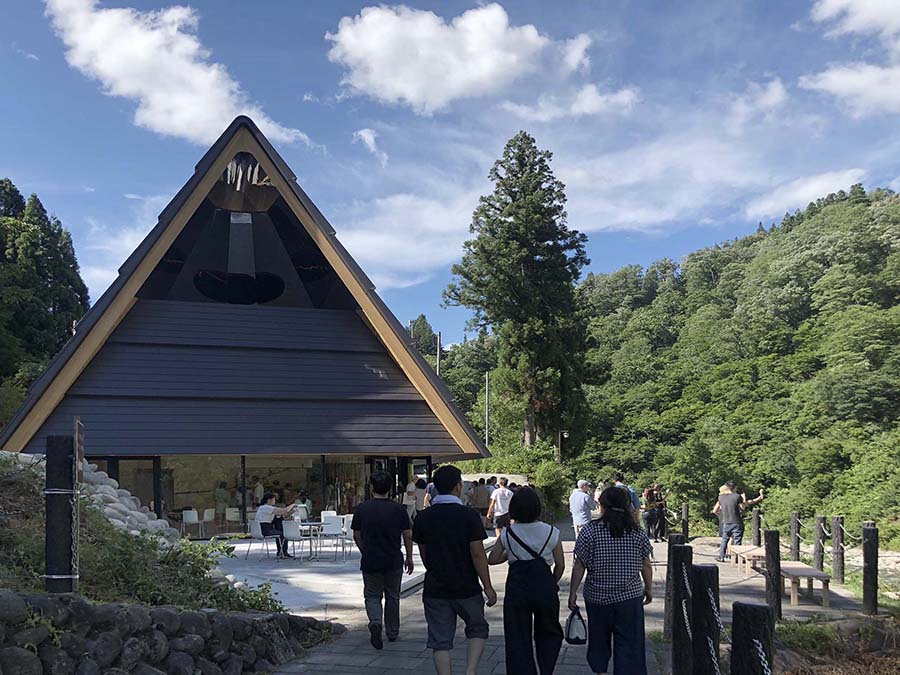
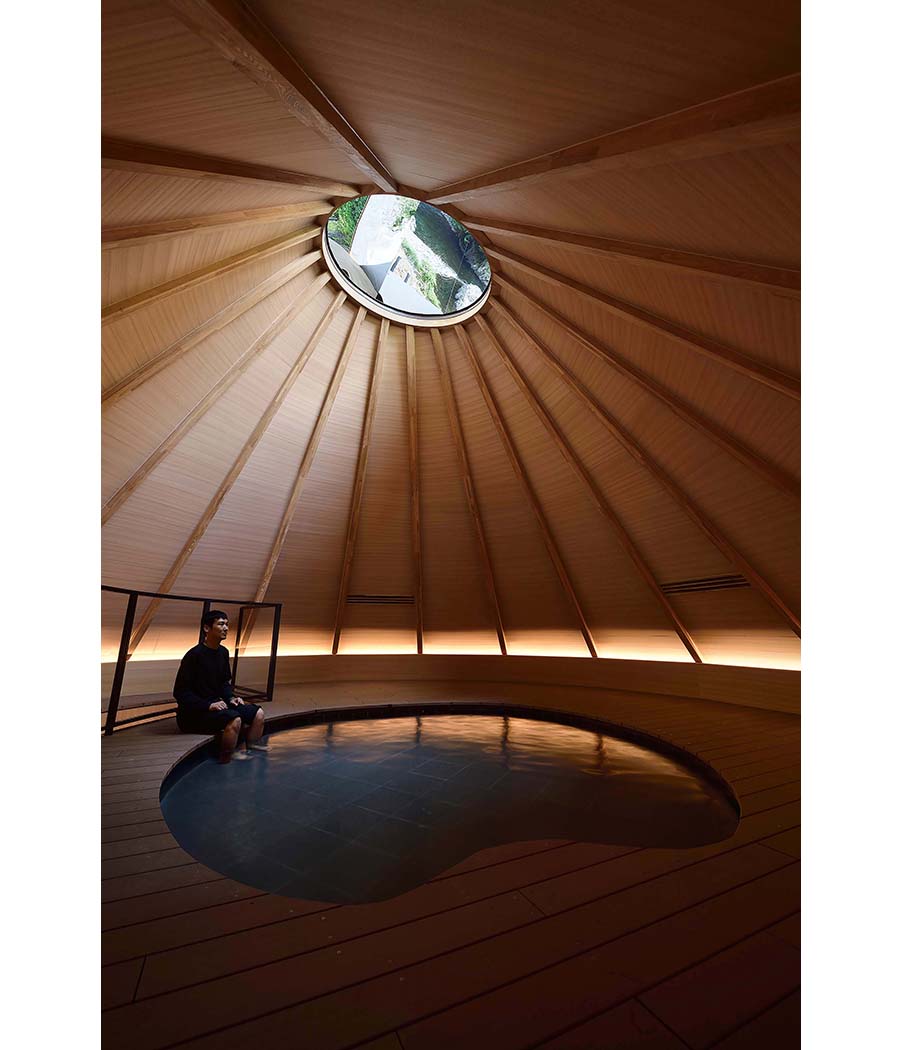
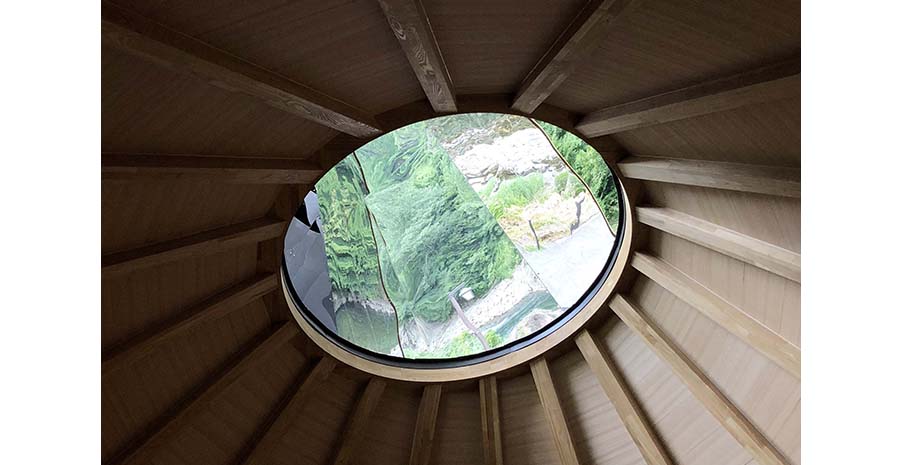
Periscope (wood)
On approaching the tunnel, a small wooden hut accommodates a café and souvenir shop on the ground floor. Inside the pitched cedar roof, on the upper level, is a hot-spring foot spa. A circular aperture – the “Periscope” – in the ceiling opens up towards the roof. Encircled by mirrored lenses that reflect the nature of the surrounding site inwards, the subtle intervention gives visitors the opportunity to enjoy the outdoor scenery.
Expression of Color (earth)
The tunnel’s entrance has been restored to its former glory, and leads the way to the newly renovated passage. A series of different colored lights define each lookout point along the tunnel.
As if landing from another world, the capsule-like structure gently mirrors the silhouette of the tunnel itself, while reflecting its surroundings.
The Drop (fire)
‘Dew drops’ are scattered along the curvature of the second lookout point. “The Drop” is a series of reflective openings, or ‘windows of uncertainty’. While they project a reality by mirroring the natural environment, the convex mirrors also appear surreal, like molecules of water, backlit by fiery, red light.
Light Cave (water)
The culmination of the restoration is expressed in the form of the “Light Cave”. Semi-polished stainless steel lines the tunnel, drawing the distinct rock formations, lush greenery, and turquoise water, into the enclosed space. The essence of the “Light Cave” brings both a lightness and stillness into the once dark, dewy tunnel, invoking a feeling of solitude.
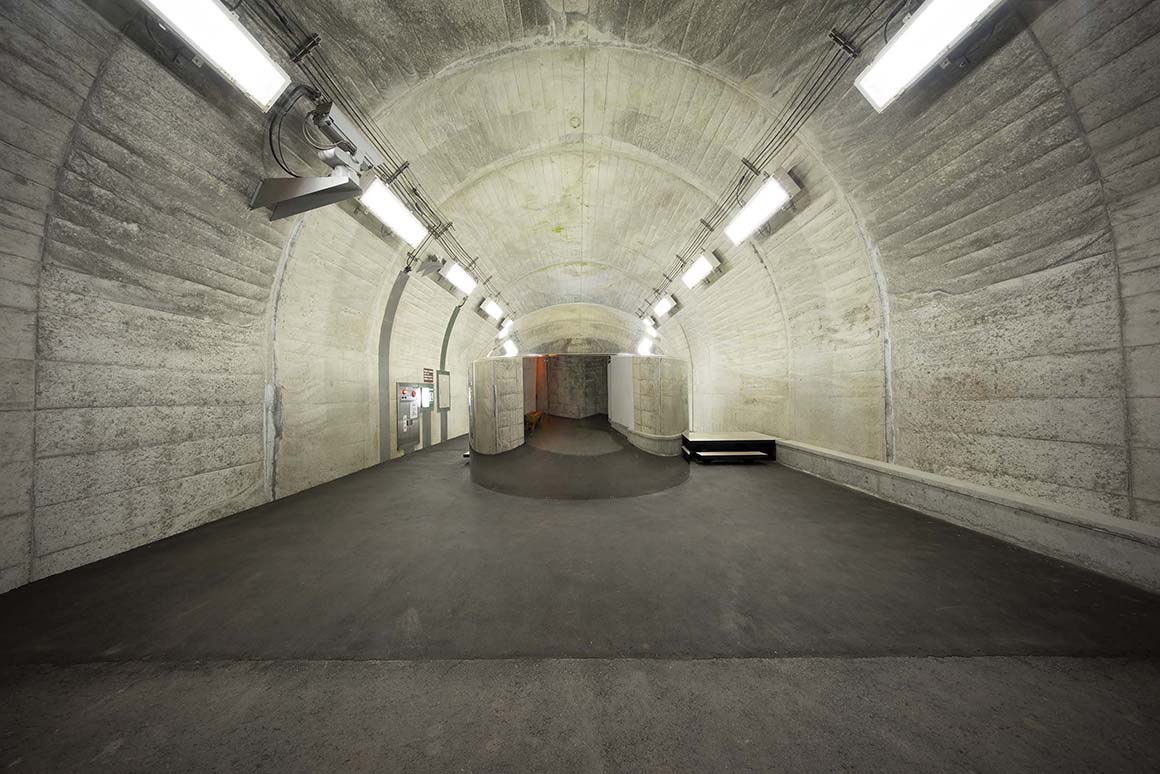

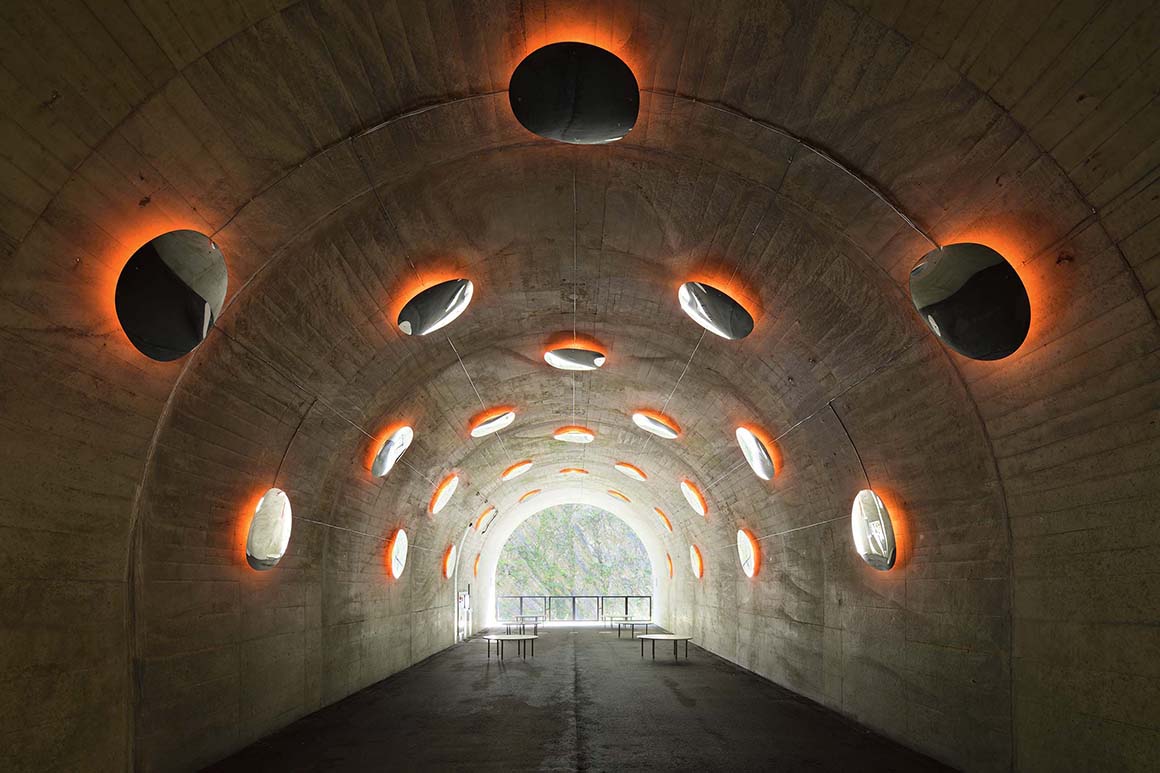
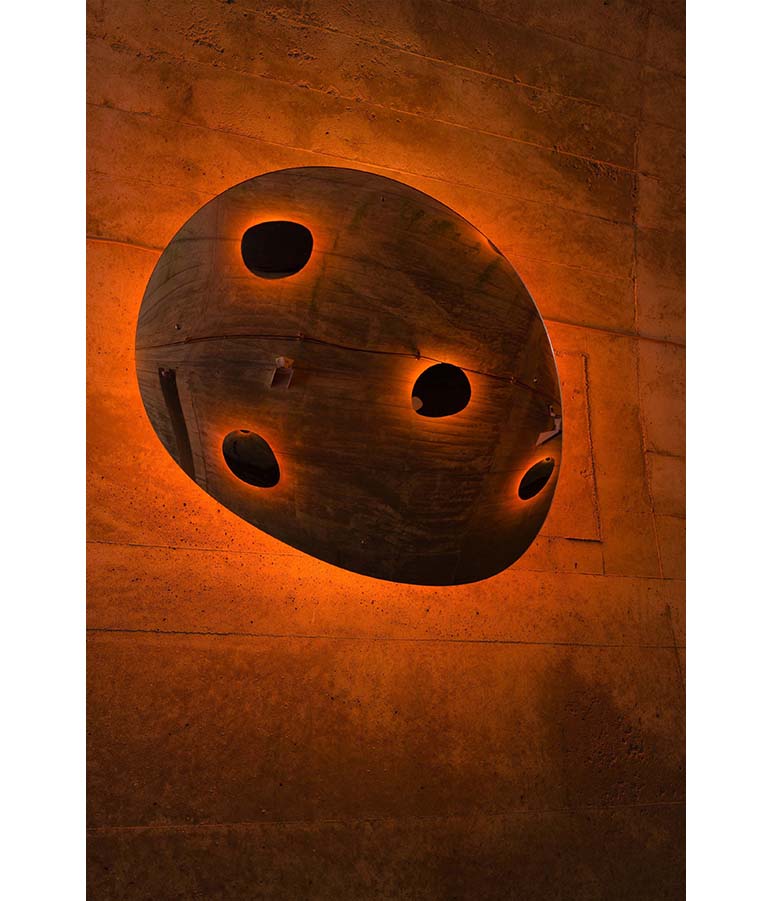
MAD’s ‘Tunnel of Light’ is an artistic transformation that demonstrates how art and nature can come together to reinvigorate a community. Each one of the installations, forms a poetic space where visitors can transcend the role of observer, and become an active participant – allowing individuals to place themselves in nature in unexpected ways.
Project: Tunnel of Light / Location: Echigo-Tsumari, Japan / Architect: MAD / Design team: Ma Yansong, Yosuke Hayano, Dang Qun, Hiroki Fujino, Kazushi Miyamoto, Yuki Ishigami / Executive architect: Green sigma Co., Ltd. / Completion: 2018 / Photograph: ©Nacasa & Partners Inc; ©Osamu Nakamura
